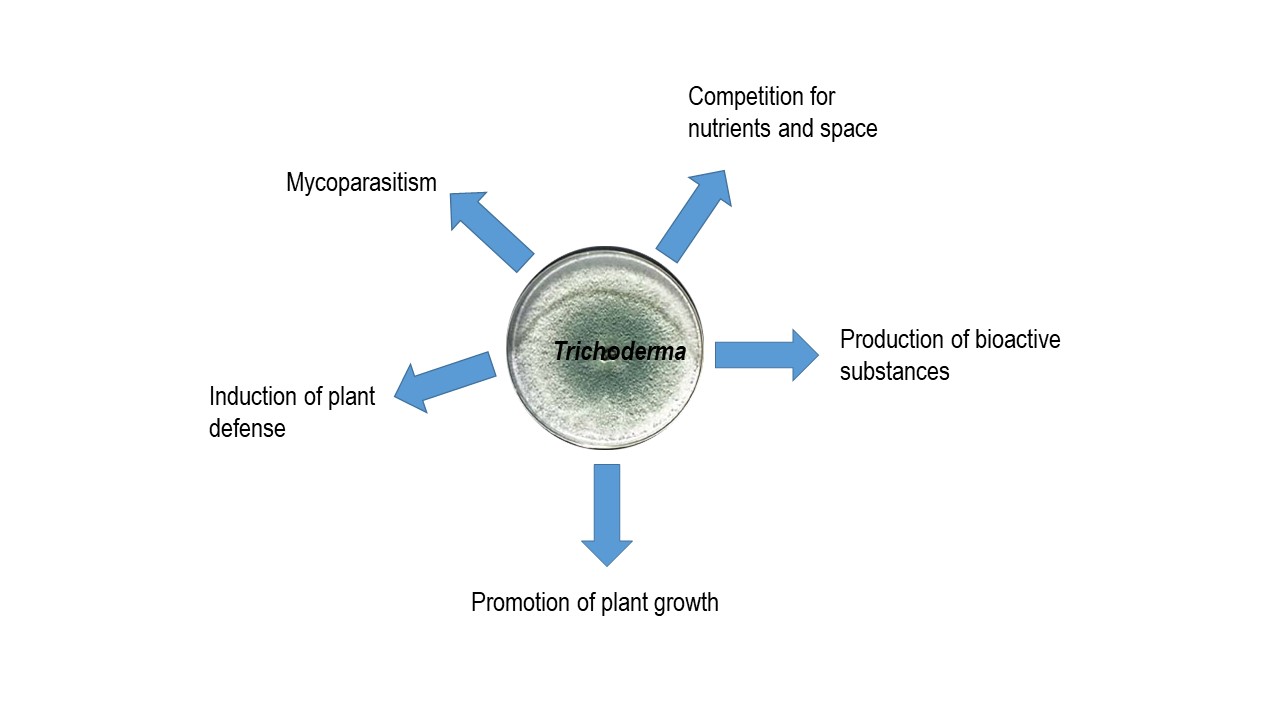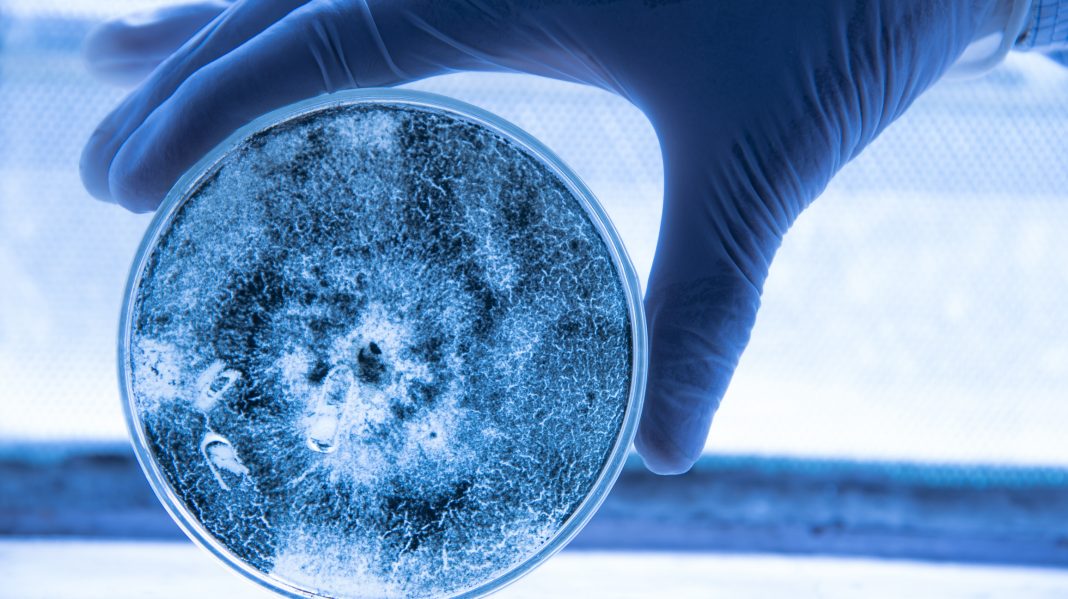Susanne Zeilinger, University Professor for Microbiology, underscores sustainable solutions for plant disease research, focusing on the power of biocontrol fungi
Plant diseases represent a significant threat to global food security and agricultural sustainability.
Fungal pathogens, in particular, can cause massive agricultural losses by infecting and damaging crops, resulting in reduced yield, poor quality and economic losses. (1)
Traditional approaches to managing phytopathogenic fungi include resistant crop varieties, cultural practices, and chemical fungicides.
While the latter can effectively manage fungal diseases, their frequent use negatively impacts the environment and raises concerns regarding safety and potential harm to human health.
In recent years, a growing interest in sustainable alternatives has emerged.
Biological control using living microorganisms to manage pests and diseases in agricultural systems is among the most promising solutions.
Microbes with biocontrol activity, such as biocontrol fungi, are natural antagonists, and respective research contributes to developing safer and more environmentally friendly fungicide options.
Understanding their modes of action, advantages, and applications can harness the power of biocontrol fungi for sustainable disease management.
Understanding biocontrol fungi
Biocontrol fungi are among the naturally occurring microorganisms and can suppress plant diseases. They live in the plant rhizosphere, competing with pathogens for nutrients and space, and may colonise the plant roots.
Several of these natural antagonists can produce substances that inhibit the growth and development of plant pathogens.
They may also induce systemic resistance in plants, enhancing their defence against diseases. (2)
Among the fungal antagonists being researched and used as microbial fungicides, Trichoderma spp. are the most prominent.
These biocontrol fungi are effective against a broad range of fungal plant pathogens, including Fusarium, Rhizoctonia, Botrytis and many more, and are considered opportunistic plant symbionts. (3)
Advantages & applications of biocontrol fungi

The advantages offered by biocontrol fungi are manifold.
First, they are environment friendly as they do not leave toxic residues in soil or water sources, which reduces the risk of ecological damage and reduces the chemical load in agricultural systems.
Secondly, they have a high degree of specificity, thereby minimising the impact on non-target organisms. This keeps the ecological balance within the agroecosystem. (4, 5)
Biocontrol fungi suppress a wide range of plant diseases. These include soilborne pathogens like Fusarium, Rhizoctonia, and Phytophthora species that are effectively antagonised by biocontrol agents such as Trichoderma spp. and Beauveria spp., which directly attack the pathogens and form a protective barrier by colonising the plant roots.
Certain biocontrol fungi, such as Ampelomyces quisqualis, have proven effective against foliar pathogens like powdery mildews and rusts.
Furthermore, entomopathogenic fungi that naturally infect and kill insect pests, such as Beauveria bassiana and Metarhizium anisopliae, are a practical agricultural insect pest management approach. (6)
Trichoderma mycoparasites as biocontrol agents
Trichoderma spp. are known as potent mycoparasites due to their ability to attack and feed on fungal plant pathogens directly.
These biocontrol agents produce enzymes like chitinases and glucanases that degrade the cell walls of pathogenic fungi and inhibit pathogen growth.
In addition, Trichoderma produce bioactive substances with antifungal activity and metabolites that stimulate the natural defence mechanisms of plants, thereby promoting their disease resistance. (3, 7)
Trichoderma-based products are used as seed treatment, soil amendments, or foliar sprays. Plant seeds can be coated with Trichoderma spores that then germinate and colonise the emerging plant roots, protecting the seedlings from soilborne fungal pathogens.
Alternatively, Trichoderma can be incorporated into compost or organic matter resulting in an enhancement of the population of the biocontrol fungus in the soil and subsequent long-term pathogen suppression.
Trichodema-containing suspensions can be used as foliar sprays that are applied to the above-ground plant parts to control foliar diseases.
Additional biocontrol approaches include combining Trichoderma with other beneficial microbes, such as biocontrol bacteria or mycorrhizal fungi. (8)
However, challenges remain, such as the fact that the biocontrol capacity of Trichoderma is determined by the plant host and by environmental cues. (9)
In the Molecular Mycology Research Group at the Department of Microbiology, University of Innsbruck, we strive to investigate how the interaction of Trichoderma with fungal plant pathogens is affected by environmental conditions, how the interaction partners communicate and recognise each other, and which role signaling molecules and phytohormones play during mycoparasitism and biocontrol.
Future plant disease research
We aim to improve our understanding of the interactions of Trichoderma with plant pathogens under different environmental conditions, including the natural soil microbiome.
The same applies to the Trichoderma-plant interaction, for which a detailed understanding of the mechanisms triggered by the fungus is essential for developing effective products for different crop plants.
Therefore, interdisciplinary efforts are needed to investigate the various aspects of Trichoderma biocontrol fungi leading to innovative and sustainable solutions for agricultural plant protection.
References
- Savary, S., Willocquet, L., Pethybridge, S.J. et al. (2019). The global burden of pathogens and pests on major food crops. Nat Ecol Evol 3, 430–439.
- Butt, T.M., Jackson, C, Magan, N. (Eds). (2001). Fungi as biocontrol agents: progress, problems and potential. CABI.
- Harman, G., Howell, C.R., Viterbo, A., Chet I., Lorito, M. (2004). Trichoderma species – opportunistic, avirulent plant symbionts. Nat Rev Microbiol 2, 43-56.
- Jaiswal, D.K., Gawande, S.J., Soumia, P.S. et al. (2022). Biocontrol strategies: an eco-smart tool for integrated pest and diseases management. BMC Microbiol 22, 324.
- Van Lenteren, J.C., Bolckmans, K., Köhl, J. et al. (2018). Biological control using invertebrates and microorganisms: plenty of new
opportunities. BioControl 63, 39–59. - Zeilinger, S., Gupta, V.K., Dahms, T.E.S., et al. (2016). Friends or foes? Emerging insights from fungal interactions with plants. FEMS Microbiol Rev 40, 182-207.
- Druzhinina, I., Seidl-Seiboth, V., Herrera-Estrella A. et al. (2011). Trichoderma: the genomics of opportunistic success. Nat Rev Microbiol 16, 749-759.
- Woo, S., Hermosa, R., Lorito, M., Monte, E. (2023). Trichoderma: a multipurpose, plant-beneficial microorgansism for eco-sustainable agriculture. Nat Rev Microbiol 21, 312-326.

This work is licensed under Creative Commons Attribution-NonCommercial-NoDerivatives 4.0 International.


